Canning 101:The Basic Steps of Canning & Preserving
Last Updated June 28, 2020 · First Published October 15, 2012
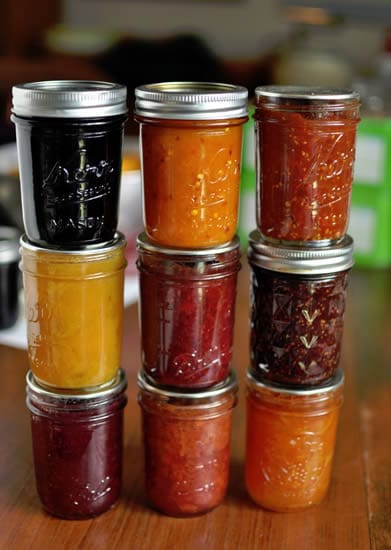
I’m delighted to be joining in on October Unprocessed. Home canning is a terrific way to rid your pantry of commercially processed foods. In order to get you started, here’s a canning primer, complete with a bit of canning history, reasons for the current canning resurgence, and even a bit of troubleshooting, should your preserving project go awry.
A brief history of preserving.
People have been preserving food since our very first days. Early techniques included drying, smoking, fermentation, and packing in fat (a method we know these days as confit). Later came vinegar pickles, jams (often sealed with wax or more fat) and suspension in alcohol. Still, none of these approaches led to reliably preserved foods. There was always some risk of spoilage.
In the late 1700s, Napoleon Bonaparte was looking for a way to dependably preserve food for his troops and so offered a cash prize to anyone who could produce a better method. After much experimentation, a French cook named Nicolas Appert discovered the packing, heating, and sealing technique that is essentially what we use today.
Home canning has been popular in the United States since the late 1850s, when John L. Mason invented the first reusable jar with a screw-on lid. Canning technology was gradually improved and in 1915, Alexander H. Kerr innovated the two-part canning lid that we still use today.
The mechanics behind canning are fairly simple.
You fill a clean jar with prepared food, apply the flat lid and the threaded ring to the jar, and submerge the filled jar in boiling water for a prescribed amount of time (times vary widely, depending on what you’re canning). When you remove the hot jar from the water, the heat begins to escape, taking with it any air left in the jar. The escaping oxygen pulls the lid down, creating an airtight seal. A food-safe sealing compound embedded into the lid aids in the maintenance of the seal. High-acid food preserved in this manner will keep happily for at least a year.
In the last 60+ years, as food production became heavily industrialized and the full-service grocery store became the norm, home canning experienced a drastic drop-off in popularity. It went from being a seasonal necessity (how else would you preserve the bounty of your kitchen garden and fruit trees?) to a neglected art, still practiced in more rural areas, but nearly abandoned by city dwellers.
Thanks to the soft economy, concerns over industrial food safety and a desire among many of us to have more control about what’s in our food, home canning has once again become popular. However, for those who didn’t grow up watching their mothers or grandmothers, the process can be intimidating. Take heart! It’s not nearly as hard as you think.
Gather your tools.
To get started canning, take stock of your current kitchen supplies. You’ll want to gather some tongs, a wide-mouth funnel, a variety of measuring cups and, if you’re feeling really committed, a jar lifter (if you’re going to do a lot of canning, I do recommend this tool. It’s saved me from a number of hot water burns over the years).
A large, wide, non-reactive pot like an enameled Dutch oven is a good vessel for cooking preserves. A deep stockpot makes a good canning pot. Just pop a round rack or kitchen rag into the bottom of the pot to allow the water to circulate fully around the jars.
Here’s how you do the actual work of canning.
Find a recipe from a reliable source like the Ball website, the National Center for Home Food Preservation or a cookbook with tested recipes.
Gather your ingredients. Always work with the freshest produce you can find.
Remove lids and rings from jars.
Place the number of jars you’ll need on top of the rack in your stock pot. Fill pot (and jars) with water to cover, place a lid on the pot and bring it to a boil.
Put your lids in a small saucepan and bring them to the barest simmer on the back of the stove.
While the canning pot comes to a boil, prepare your product.
When your recipe is complete, remove the jars from the canning pot (pouring the water back into the pot as you remove the jars) and lay them out on a clean towel on your counter.
Carefully fill your jars with your product. Depending on the recipe, you’ll need to leave between ¼ and ½ an inch of headspace (that’s the room between the surface of the product and the top of the jar).
Wipe the rims of the jar with a clean, damp paper towel or the edge of a kitchen towel.
Apply lids and screw the bands on the jars to hold the lids down during processing.
Carefully lower the filled jars into the canning pot. You may need to remove some water as you put the jars in the pot. A heat-proof Pyrex measuring cup is the best tool for this job.
Once the pot has returned to a boil, start your timer. The length of the processing time will vary from recipe to recipe.
When your timer goes off, remove the jars from the water bath promptly. Place them back on the towel-lined countertop and let them cool.
The jar lids should begin to ping soon after they’ve been removed from the pot. The pinging is the sound of the seals being formed and the center of the lids will become concave as the vacuum seal takes hold.
After the jars have cooled to room temperature, remove the bands and check the seals. You do this by grasping the jar by the edge of the lid and gently lifting it an inch or two off the countertop. The lid should hold fast.
Once you’ve determined that your seals are good, you can store your jars in a cool, dark place (with the rings off, please) for up to a year.
Jars that don’t seal can be refrigerated and used first.
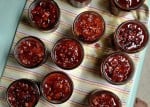

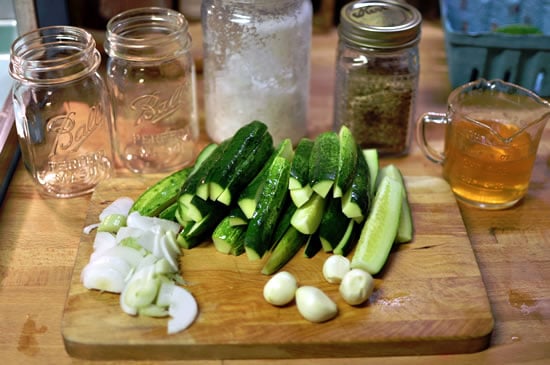

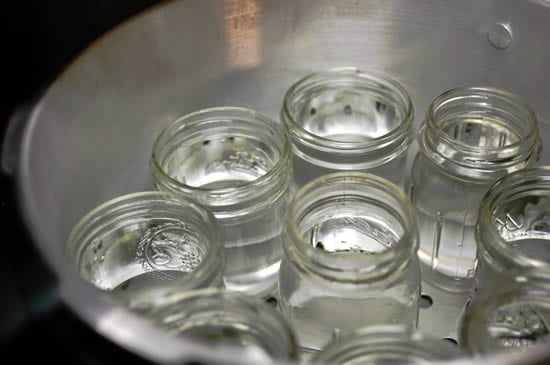
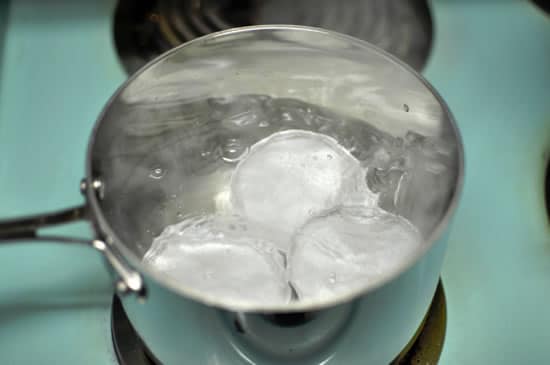
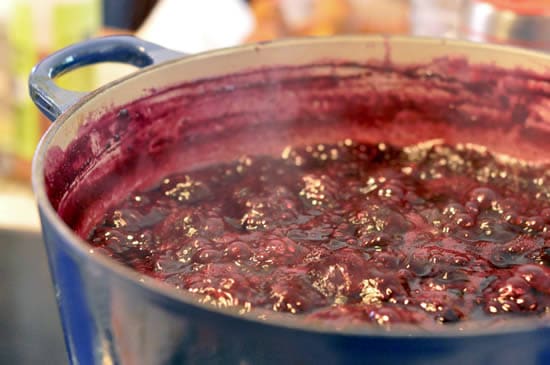


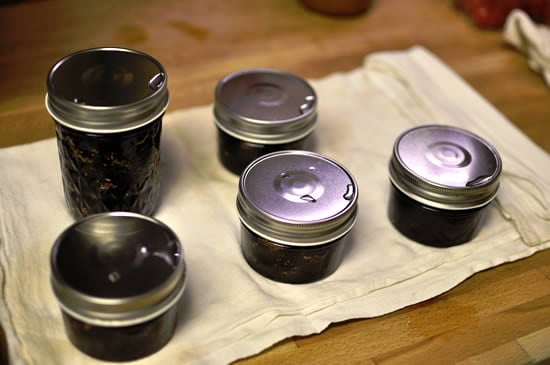
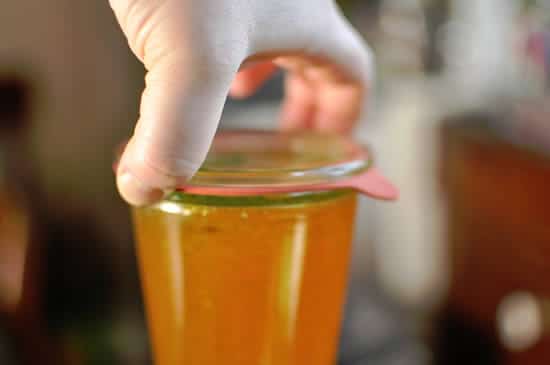
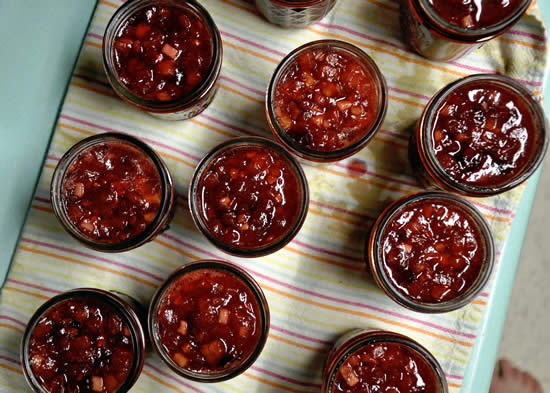
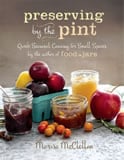

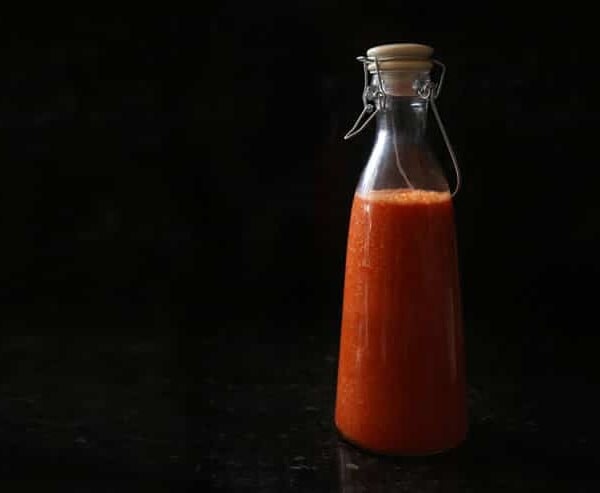

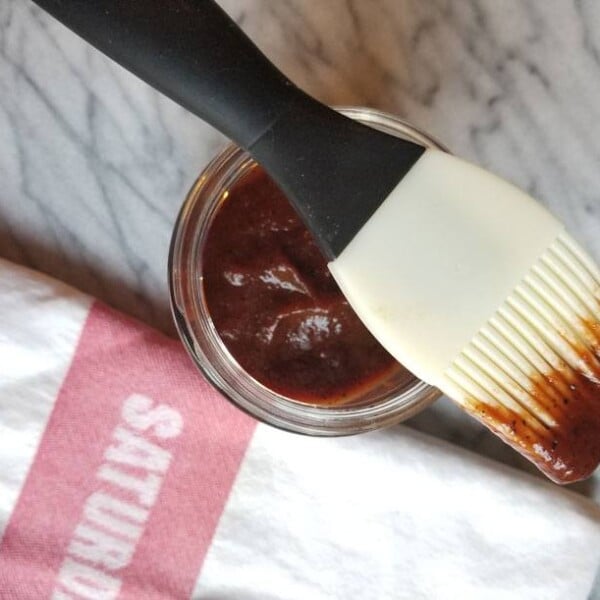
















What would be the purpose, and is it optional to store the canned goods without their bans?
Please reply ASAP!
Thanks
Gotcha, once they’re cooled do you keep the rings off or do you put them back on?
Definitely keep the rings off. If the lids release/open while in storage, throw the contents away as they’re no longer safe to eat.
Why do they need to be Stored with the rings off?
Good question. When the jars cool, it creates a vacuum and seals the lids. If the ring is in place, you won’t be able to tell if you have a bad seal–which would lead to spoilage. Without the ring, a bad seal will be obvious – and you’ll know not to eat it.